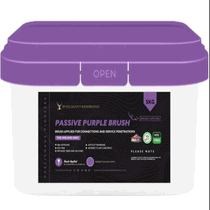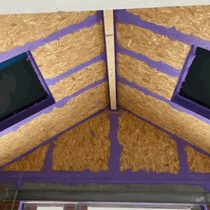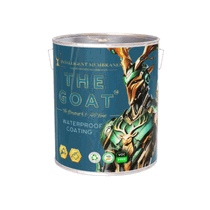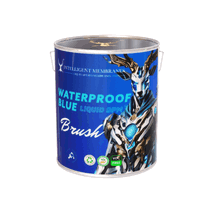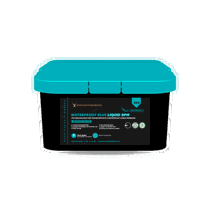Brand: Intelligent Membranes
Read more
Defining Intelligent Membranes and Their Key Traits
Intelligent membranes are advanced materials capable of sensing, adapting, and responding to changes in their environment. They mimic biological structures to regulate physical or chemical conditions, employing novel materials such as molybdenum disulphide (MoS2). These membranes can control heat and mass flow, store energy, and even switch their wetting properties to protect against harmful agents. They possess a remarkable ability to remember past states, thanks to memory effects. Their key traits include high sensitivity, a broad response range, and self-healing capabilities. They facilitate real-time, continuous monitoring and can adapt their structure and chemistry to environmental stimuli. Some also have energy storage capabilities, making them versatile tools for various applications. Overall, intelligent membranes combine innovative materials and design to create responsive, durable, and efficient systems suitable for a wide range of uses in the UK and beyond. Thanks to advances in nanotechnology, they are paving the way for innovative solutions across multiple industries.
Practical Uses and Advantages in Various Fields
Intelligent membranes have practical applications across a wide range of fields in the UK, offering significant benefits in each area. They help improve building energy efficiency through airtight seals, such as Passive Purple, and prevent fibre release in asbestos management.
These membranes also enhance the durability of heritage buildings and support eco-friendly construction by minimising waste. In environmental work, they enable smarter water purification, act as biodegradable barriers, and adapt permeability to environmental conditions.
They're essential in healthcare, serving as smart filters, sensors, and in tissue engineering for tissue repair. In energy and chemicals, they assist in energy storage, process monitoring, and temperature regulation.
Their benefits include:
- Improving efficiency
- Ensuring safety and compliance
- Boosting sustainability
- Supporting innovative solutions
Methods for Fabricating Adaptive Membranes
Interfacial polymerisation and layer-by-layer assembly are key methods for creating adaptive membranes. These techniques allow precise control over membrane properties, such as permeability and response to environmental changes. Understanding how these methods work aids in designing membranes that can adjust their functions for various applications within the UK context. Interfacial polymerisation involves a rapid reaction at the interface of two immiscible phases, resulting in thin-film composite membranes with tailored functionalities.
Interfacial Polymerization Techniques
Fabricating adaptive membranes often involves a process known as interfacial polymerisation, which occurs at the boundary between two immiscible liquids, typically water and an organic solvent. This technique facilitates the creation of ultrathin, selective layers on supportive materials.
Here are four key points about interfacial polymerisation (IP):
-
It forms high-performance membranes by polymerising monomers such as amines and acyl chlorides at the interface.
-
The process is rapid and spontaneous, allowing for control over film thickness by adjusting reaction time and monomer concentrations.
-
The ratios of monomers and reaction parameters significantly affect the membrane's permeability and selectivity.
-
Modifications to solvents, temperature, or support properties can help tailor membranes for specific applications, thereby enhancing their adaptive capabilities.
This method provides a practical means of producing membranes with customisable features for water treatment and beyond.
Layer-by-Layer Assembly Methods
Layer-by-layer (LbL) assembly is a flexible and precise method used to build thin films by depositing alternating layers of materials, such as polymers or biomolecules. This technique allows for control over the film’s shape, composition, and properties, making it useful in various fields including biomedical applications and nanotechnology. Research has demonstrated that LbL assembly can be tailored to produce membranes with specific biological functions. It operates through noncovalent weak forces that facilitate the self-assembly of materials into organised structures. LbL can create biomembrane-like layers on microfluidic droplets, controlling features such as lamellarity and asymmetry. It simplifies the synthesis of complex membranes and offers clear visualisation of the assembly process. Microfluidic advancements enhance the speed and uniformity of the process, enabling the production of adaptive membranes that can encapsulate drugs, sense biological signals, or mimic natural structures—all under gentle conditions that preserve the functions of biomaterials.
Types, Structures, and Design Principles of Membranes
Intelligent membranes are specialised materials designed to respond to environmental changes, allowing for adaptive functions such as controlling permeability or enhancing durability.
There are various types, each suited for specific applications:
- Sheet-based membranes are solid sheets used for waterproofing and building facades.
- Liquid-applied membranes form waterproof coatings when sprayed or rolled onto surfaces.
- Breathable membranes allow vapour to pass while blocking water, helping manage moisture in walls and roofs.
- pH-responsive membranes change permeability based on environmental pH, offering dynamic control. They can be integrated into building envelopes to improve energy efficiency and indoor air quality. Their structures vary to support functionality: polymer matrices incorporate stimuli-responsive components, light-sensitive elements react to illumination, inorganic frameworks improve stability, and micro-/nano-porous designs enable selective vapour transmission.
These design principles ensure that each membrane adapts effectively to its environment.
Functional Components That Enable Responsiveness
Functional components that enable responsiveness are essential parts of smart membranes, allowing them to sense environmental changes and react accordingly. These components include synthetic polymers whose chemical properties can be adjusted, making the membranes adaptable. Such polymers can undergo reversible modifications, further enhancing the stimuli-responsive capabilities of the membranes. Biomaterials are employed to enhance biocompatibility and functionality in biological settings. Nanoparticles augment properties such as permeability and selectivity, while conductive materials facilitate electrically responsive behaviours useful in sensing. Shape-memory alloys contribute to mechanical responsiveness, enabling membranes to self-repair or change shape when necessary. These components work in unison through mechanisms such as stimuli-responsive systems that react to temperature, light, pH, or mechanical forces.
Overcoming Challenges and Exploring Future Opportunities
Many current challenges hinder the widespread deployment of smart membranes, particularly when it comes to maintaining their performance in real-world conditions.
Structural issues, such as solute blockage and contamination, result in a decline in performance over time. Fixed properties render them less effective in complex environments. For instance, Nafion membranes in batteries lack the necessary selectivity, which can lead to device degradation.
Manufacturing methods are often intricate, necessitating further optimisation or the development of new techniques. Moreover, scaling up production and integrating membranes with other technologies, such as wireless sensors, present significant obstacles.
To address these challenges, researchers are concentrating on developing:
- Improved materials that resist contamination,
- Adaptive structures for dynamic environments,
- Streamlined manufacturing techniques,
- Scalable methods for integration and deployment.
Conclusion
Intelligent membranes are advanced materials that respond adaptively to their environment, offering innovative solutions across numerous fields. They are designed with specific functional components that enable their responsiveness and can be fabricated using various methods. Despite current challenges, ongoing research continues to enhance their performance and expand possibilities. As technology progresses, these membranes are expected to play an increasingly vital role in areas such as medicine, industry, and environmental management, demonstrating their potential to address real-world problems efficiently.



